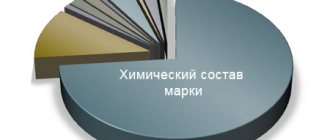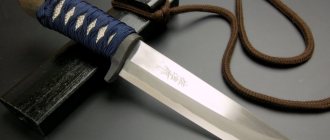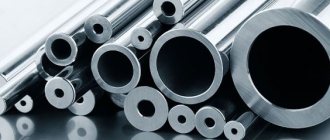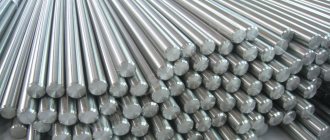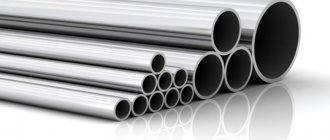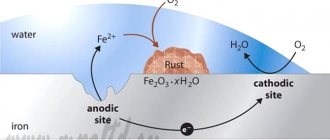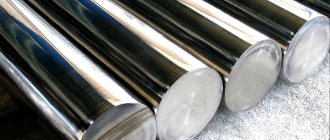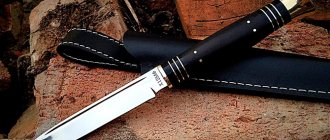Metal grades st20 and 09g2s are in demand in the market of pipes and pipeline fittings. They are used in domestic and foreign industry for the production of:
- rolled metal;
- welded structures;
- bends, supports and locking mechanisms;
- tees and transitions.
Their popularity is associated with high performance characteristics, which allow them to be used in regions with critically low outside temperatures, in high-pressure systems and sudden changes.
Despite the use of these brands in the same areas, their type and individual chemical and physical parameters differ. Therefore, the manufacturer selects the appropriate material in accordance with technical specifications, state and industry standards, and the characteristics of the transported working environment.
Welding steel pipes 20
The material belongs to low-carbon structural steels. A wide range of rolled products are made from it: from forgings to straight-seam pipes.
The raw material has good weldability and does not require preheating. Subsequent heat treatment is also not required. After processing, the alloy does not lose strength and reliability, and the resulting seam (scar) can withstand significant mechanical stress.
Chemical and physical indicators
Looking at the decoding of steel grade 08Х18Н10Т, you can see that this alloy is highly alloyed. That is, it contains a large number of special additives that improve its chemical and physical properties.
The alloy is made from iron and carbon, and its structure is crystalline. Iron atoms are located between the crystals. Carbon atoms, due to their smaller size, are embedded in the crystal lattice, gluing it, thereby giving additional strength. The atoms of the additives that make up the alloy also behave in the same way.
Welding methods
Pipe structures made from St20 are welded in different ways. The three most common technologies are:
- thermal: it includes gas, laser, plasma, arc, electron beam;
- mechanical: this group includes joining of metal products by friction and explosion;
- thermomechanical: a combined method involves exposing the metal to elevated temperatures and mechanical forces. Suitable for fastening small parts.
In addition, subtypes are distinguished depending on the method of carrying out work: mechanized and manual technologies.
For low-carbon alloy twenty, electric welding is optimal (semi-automatic in shielding gases, automatic using wire, manual arc, manual argon arc). Gas is used less frequently: it poses an increased danger due to gas cylinders, which are under high pressure.
Steel 09g2s - characteristics
The decoding indicates the composition and characteristics of the material.
- 09 - volume of carbon in the chemical composition (0.09%);
- g2 - manganese content (varies from 1.2% to 2%);
- C - silicon, the number at the end of the marking indicates its amount, in this case less than 1%.
Alloying of steel is not limited to these three components. Nickel, sulfur, phosphorus and other elements are added to the composition, but their total content is no more than 2%. The density is about 7800 kg/m3, it is reduced by adding copper or cobalt, and increased by tungsten.
The metal is easily welded, so it is used to organize technological lines for civil and industrial purposes. It is resistant to critically low temperatures (down to -70C), therefore it is used in the oil and gas industry in the northern regions of the country.
Hardness is determined using several systems depending on the type of product. Limit characteristics are regulated by technical specifications 14-3-1128-2000.
The chemical composition and performance properties of products from foreign manufacturers may differ from those operating in Russia and the CIS countries, which is due to differences in the requirements of state standards.
Application difference
St20 has a low operating temperature. This means that metal products heat up quickly, and their ductility increases. With strong cooling, on the contrary, the structure becomes fragile.
Therefore, in harsh conditions, 09g2s steel is used, which is easy to weld and is suitable for use in areas where high wear resistance is required. In economic terms, 20 is cheaper, so it is often chosen in industry where the temperature range is not important.
Steel 09g2s is a very popular steel, used both in construction and in many industries. There are domestic and foreign analogues of this type. It is most often used for the manufacture of pipes, rolled metal and welded metal structures, the temperature range of which is from -70 to 425 0 C9 with permissible loads on them).
Welding technology
Usually divided into three stages: preparatory, metalworking itself, and final. According to the standards, the first includes cleaning the surface of the workpieces from dirt and grease; alignment of steel pipes at the joint; selection of a suitable welding mode. Cleaning the edges of the elements from scale, burrs and degreasing the surfaces will help avoid defects in the resulting seam.
After the preparatory activities, they begin the second stage - welding.
- Turn on the welding machine, to which a cable with a rod holder is connected. The choice of current source and mode depend on the thickness of the parts, the experience of the welder, and the method of work. It is also necessary to fix the ground contacts on the workpieces being processed.
- Perform preheating (it is not required for steel twenty).
- Install tack welds. Their dimensions and quantity are determined by the thickness of the metal on the parts and the size of the workpieces.
- The products are welded along the contour.
At the final stage, the weld scar is cleaned of slag. The cooled, hardened cover is beaten with a hammer. Using a stiff brush, it is cleaned from scale, splashes of hot metal, and sagging. If the number of formations is large, use a grinder or grinder. Afterwards, the resulting scars are examined to exclude defects or uncooked areas. In industrial conditions, X-ray transmission is used for visual inspection.
Types of stainless steel and its classification
The entire variety of anti-corrosion steel types is divided into 5 large groups. The basis for this division is the microstructure of the material. Of these, representatives of the following 3 groups are most often found:
- Martensitic steel is distinguished by the letter “C” in the marking. It acquires its properties not only due to its composition, but also as a result of hardening and tempering. Applicable in the production of cutlery and cutting tools. Slightly magnetized, has increased hardness.
- Ferritic alloy is softer than martensitic alloy. Also endowed with magnetic properties. Its designation contains the letter “F”.
- Austenitic steel, containing 15-20% Cr and 5-15% Ni, is not magnetized and has the highest resistance to corrosion. Denoted by the letter "A". Steel grades from this group are most common in industrial production, as well as in the manufacture of hardware and fastening devices.
In turn, austenitic alloys are divided into 5 classes, additionally indicated by a digital value:
- A1 is the least resistant to corrosion due to the sulfur contained in the chemical composition. Used for the manufacture of parts for mechanical and moving units.
- A2 is steel that is resistant to moisture, but is not suitable for work in environments containing acids, alkalis, chlorine and salts. Ecologically harmless, not magnetized, not subject to hardening. Excellent for the manufacture of all types of fasteners intended for use in non-aggressive conditions.
- A3 - similar in properties to class A2 steel. However, this metal better resists corrosion in high-temperature environments, due to the stabilization of the alloy with niobium, titanium or tantalum.
- A4 - differs from A2 steel in the presence of molybdenum in an amount of 2-3%. This small additive gives the metal high resistance to acids, alkalis, and salts. Can operate in low temperatures, down to -60°C. A4 fasteners are intended for the construction of bridges and coastal structures. It is used in shipbuilding, chemical and oil and gas enterprises.
- A5 is steel stabilized with titanium, which makes it highly resistant to corrosion at high temperatures. Other technical characteristics are similar to class A4.
In different countries, fasteners are produced according to different standards. In Russia these are GOST standards, in Germany – DIN, in the USA – AISI, in Europe – EN and international ISO. Many fasteners manufactured according to the standards of different countries are considered analogues. However, this is not entirely correct, since small differences still exist, if only due to the inconsistency of measurement systems. Therefore, it is better to entrust the replacement of fasteners when assembling structures that differ from those indicated in the drawings to specialists.
What electrodes should be used to weld a pipe?
When working, you cannot do without consumables - electrode rods. They are a metal rod, on the surface of which a special coating (coating) is applied. It provides a protective layer (film) that prevents oxygen and nitrogen from entering the seam.
Types of equipment by type of protective layer:
- with rutile film - needed for creating fillet welds and tacks;
- with cellulose coating - used for fastening objects with large diameters. Allows you to create circular, vertical seams;
- with a rutile-cellulose layer - a combination that is in demand when making complex structures (for example, a vertical seam from top to bottom).
When selecting rods, several factors are taken into account: operating mode, equipment power, conditions under which the work is performed, metal quality, and others. The choice of core is strictly regulated by special documents.
Electrodes for pressure pipelines
For connecting pipe sections from steel twenty, rods E42A UONI-13/45 are optimal. If they contain materials 30ХМА, 20Х3МВФ, it is better to choose equipment EP-60, TsL-19ХМ, VSN-2.
Also for joining high-pressure lines, grades OK 74.70 and OK 53.70 are used. The latter are coated with a special flux, allowing for high-quality processing of networks that are created on the basis of low-carbon steels. The result is a welded joint that has increased ductility and good impact strength.
Electrodes for gas pipelines
Several brands are used for gas pipelines. OK-46 is considered the most universal. It provides a high-quality seam, therefore it is often used when processing critical structures (including in shipbuilding and aircraft construction).
Strong, durable seams in rotating and non-rotating areas of gas mains make it possible to obtain grades LB-52, UONI-1355, MTG-01K. These rods are characterized by a stable arc, easy removal of slag, and low spatter.
Electrodes for oil pipelines
Among domestic elements, certified LEZ LBgp brands are most widespread. Devices with a diameter of 2.5 - 4 mm are coated with silicon, sulfur, carbon, and manganese.
Equipment from foreign manufacturers is also used for oil pipelines: OK 53/70 (Sweden), LB 52U (Japan), etc.
Electrodes for heating networks
To create a short arc, the TsL-9 grade with a low hydrogen content is often used. It allows you to work in any spatial position, but releases toxic toxic substances when burned. Also for heating networks, wire E42A, E-09X1MF, UONII-13/45 is chosen.
What is unique about stainless steels?
Stainless steel was patented in England in 1913. The author of this invention, which, without exaggeration, became the most important stage in the development of not only steel, but also other industries, is metallurgist Harry Brearley.
The addition of an element such as chromium to their chemical composition made it possible to endow ordinary steel alloys with unique characteristics and obtain corrosion-resistant steels from them.
It is chromium, which must be at least 10.5% in stainless steel alloys, that provides these materials with such characteristics as:
- exceptionally high corrosion resistance;
- very high strength;
- good weldability;
- ease of processing using cold deformation methods;
- long service life without loss of original characteristics;
- aesthetically attractive appearance of products made from alloys of this category.
Influence of alloying elements on the properties of steels
Stainless steels necessarily contain chromium and iron in their chemical composition. These elements complement each other, which is what gives these materials such unique characteristics. In particular, chromium, combining with oxygen, creates an oxide film on the surface of the stainless alloy, which becomes a reliable obstacle to corrosion processes.
In order to provide stainless steel with additional characteristics and significantly improve existing properties, alloying additives are introduced into its chemical composition - nickel, titanium, molybdenum, niobium, cobalt, etc. This alloying makes it possible to create various types of stainless steel alloys that differ from each other their characteristics and, accordingly, purpose.
We are already so accustomed to corrosion-resistant steel that we don’t even notice how much more comfortable our lives have become due to the presence of stainless steel in it.
Stainless steel contains carbon in its chemical composition, which gives it high hardness and strength. It should be noted that this chemical element is an essential component of any steel alloy and has a serious impact on its properties.
The unique characteristics of stainless steel make it possible to successfully use this metal in a variety of areas related to the operation of products and equipment in conditions of high humidity and constant exposure to aggressive environments. Stainless steels are actively used for the production of products for both industrial and household purposes. In particular, it is from this metal that cutlery and knives are most often made, elements of communications and enclosing structures, equipment parts, etc.
Welding pipes made of steel 20 and 09g2s
The alloys have a low carbon content. They do not harden, are not prone to overheating, and are resistant to cracking. For manual or automatic fastening of structural lightly alloyed substances 09G2S and 20, the equipment UONI-13.55, E42, ANO-21, OZS-12, MR-3 LUX is suitable. If the technology is followed, the proper selection of raw materials and equipment, a strong welded joint section is obtained.
Technological instructions are disclosed in more detail in STO 00220368-011-2007. The document contains requirements for materials and methods of metal processing of dissimilar compounds made of carbon, high- and low-alloy steels and alloys.
How to weld beautiful seams - video
Source
Steel 09g2s 12: decoding
Understanding how labeling is formed allows you to clearly understand what product the manufacturer represents, as well as its main features. For those who are interested in details about 09g2s, the breakdown of steel is as follows:
- 09 – quantitative fraction of carbon content in the alloy (0.09%);
- G2 is manganese and its part in the entire volume fluctuates around 2% (the exact figure ranges from 1.3 to 2%);
- C - denotes silicon, the absence of numbers after the symbol indicates that it is less than 1%.
Thus, the decoding of 09g2s clearly looks like this:
| Element | Content, % |
| C (carbon) | up to 0.12 |
| Si (silicon) | 0,5 – 0,8 |
| Mn (magnesium) | 1,3- 1,7 |
| Ni (nickel) | up to 0.3 |
| S (sulfur) | up to 0.04 |
| P (phosphorus) | up to 0.035 |
| Cr (chromium) | up to 0.3 |
| N (nitrogen) | up to 0.008 |
| Cu (copper) | up to 0.3 |
| As (arsenic) | up to 0.08 |
| Fe (iron) | 96-97 |
As can be seen from the table, the interpretation of steel 09g2s is not limited to only three alloying components. In addition to carbon, silicon and manganese, it is supplemented by the following elements: nickel, sulfur, phosphorus, chromium, nitrogen, copper, etc. The percentage component of alloying metals is no more than 1-2 total%.
Marking 09g2s on a steel sheet
Also, for steel 09g2s, not only the alloying level is taken into account, but also other factors. Here are just a few of them that are significant for a particular case:
- constructiveness (purpose);
- eutectoid (structure: hexagonal, cubic, etc.; changes after hardening, etc.);
- production method (open hearth, conventional or electric steel);
- chem. steel composition 09g2s (in this case low-alloy).
As a result, analogues appear in relation to which questions like the following are often asked: is 345 steel 09g2s ? The designation C345 was introduced for builders , where the numbers do not indicate the chemical composition of the material, but its important property - the yield strength; for steel 09g2s it corresponds to the construction standards C345, which is reflected in a number of GOSTs (27772-88).
Below, several classic options are considered, including when one grade of steel corresponds to several strength classes.
Read also: DIY water level sensors
Weldability groups of steels
The weldability of steel is a characteristic indicating the possibility of welding metal with satisfactory mechanical properties without the formation of cracks. There are four groups of weldability of steels :
- good weldability
- satisfactory weldability
- limited weldability
- poor weldability
Typically, steels with low carbon content have good weldability, while those with high carbon content have limited or poor weldability.
Which is better: carbon steel or stainless steel?
Stainless steel is used:
- in the energy and chemical industries when working with aggressive environments;
- in medicine, aircraft manufacturing, where durability and increased strength of instruments are required;
- in construction and other areas where the type of parts plays an important role.
Carbon steel is needed there:
- where a lot of durable material is required - for example, in the construction of pipelines;
- where there is no need for improved metal properties - in particular, in the production of small parts of mechanisms and tools.
The considered types of steel cannot be placed in the same row. Materials are selected based on the project budget and area of application.
Weldability group 4 - poorly weldable steels
Group 4 steels are difficult to weld, cracks often form at the seams, they must be heated before welding and during the welding process. Heat treatment is also required after welding.
Group 4 includes unalloyed tool steels U7, U8, U8A, U8G, U9, U10, U11, U12, 40G, alloy structural steel 45G, 50G, 50X, 50KhG, 50KhGA, steel 55L, 65, 75, 85, 60G, 65G , 70G, 55S2, 55SA, 60S2, 60 S2A, Х12, Х12М, 7Х3, 8Х3, ХВГ, ХВ4, 5ХГМ, 6ХВГ.
Table of weldability of steels.
Welding stainless steel with alternating current
A high-quality weld can also be obtained using transformers.
The most popular brands of electrodes in this case: Among foreign analogues, ESAB products are widely used, brands: OK 61.30 (can work with parts of different thicknesses), OK 63.20 (allows you to weld thin-walled pipes).
How to weld stainless steel to stainless steel with an electrode
We will tell you how to weld stainless steel to metal with an electrode using the example of inverter welding. To begin with, the necessary parameters are set on the device - the thickness of the part, the diameter of the rod, the current strength. In appropriate order these are:
- 1.5 mm – d 2 mm – 40–60 A;
- 3 mm – d 3 mm – 75–85 A;
- 4 mm – d 3 mm – 90–100 A;
- 6 mm – d 4 mm – 140–150 A.
The following is the procedure:
- The joint surface on the part must be cleaned with a wire brush.
- For better penetration (with a thickness of 4 mm or more), the edges are cut with a file or grinder.
- When connecting thin-walled products (up to 2 mm), tacks are preliminarily performed.
- with a large thickness (from 7 mm) the joint zone is preheated to 150 ⁰C.
- By lightly touching the metal, the electrode is activated and the arc is ignited.
- the metal is welded using a short arc.
- upon completion of welding, a “lock” is made to avoid the appearance of fistulas and cracks.
- The product must cool down (at least 5 minutes).
Then the remaining slag crust is removed with a hammer (by light tapping). Cleaning with a wire brush is also possible.
Weldability of various steel grades
Let's look at the weldability of the most common steel grades.
Weldability of steel 09g2s and St3
Steels St3 GOST 380-94 and 09g2s GOST 19281-89 belong to group 1; their welding does not require heating. The weld seam, if the technology is followed, is not prone to cracking.
Weldability of Steels 10 and 20
Steel 10 and steel 20 GOST 1050-88 belong to weldability group 1. Parts made from the specified steel grades are well welded without additional heating.
Weldability of Steel 45
Carbon steel 45 GOST 1050-88 belongs to weldability group 3. For welding, this steel must be heated, and after welding it must be subjected to heat treatment.
Source
Characteristics of steel grade 08Х18Н10Т
| Standard | GOST 5949-75 - Graded and calibrated steel, corrosion-resistant, heat-resistant and heat-resistant. Specifications | |
| Application | Welded equipment operating in highly aggressive environments, heat exchangers, muffles, pipes, furnace fittings, electrodes of spark plugs; austenitic steel | |
Steel 08Х18Н10Т
belongs to the class of alloyed, corrosion-resistant, heat-resistant steels of the austenitic group.
Supplied in the form of long products and sheets, calibrated rods and forged blanks.
History of discovery
Today it is difficult to imagine a world without numerous inventions. Many of them were made by accident. This is how stainless steel appeared. The first historical mention of this metal can be found in the records of Harry Brierley. This metallurgist researcher in 1912 took an order from one of the weapons companies to find an effective way to extend the service life of gun barrels. The practitioner began to work in his usual style - he began mixing different components. The man tested the finished alloys for heat resistance and durability. If the indicators were low, the blanks were sent to a landfill. One of the details stood out among all with its brilliance. After a detailed study of the analysis, scientists found that the alloy consists of several elements:
- iron - 85.3%;
- chromium - 12.8%;
- manganese - 0.44%;
- carbon - 0.24%;
- silicon - 0.2%.
Not all researchers give the lead in the discovery of the stainless flock to Harry Brierley. Some believe that stainless steel was discovered by Pierre Berthier, a French mining engineer. He discovered that certain compounds of iron and chromium, which can be found in nature, stand out for their high acid resistance. He was the first to suggest making dishes and cutlery from them.
General information
Purpose
Welded equipment operating in highly aggressive environments (solutions of nitric, acetic acids, solutions of alkalis and salts), heat exchangers, muffles, pipes, furnace fittings, electrodes of spark plugs. Corrosion-resistant and heat-resistant austenitic steel.
Structure
The microstructure of this grade of steel in the hardened state is austenite. After this steel is heated to 450-850°C, chromium carbide begins to precipitate at the boundaries of austenite grains. When heated, this steel tends to create intergranular corrosion, and the ductile properties of the material also decrease slightly. After hardening, this grade of steel becomes more resistant to intergranular corrosion. This steel is non-magnetic. Scale is formed in air at temperatures exceeding 850 °C. It is recommended to operate this steel at a temperature of 800°C.
Chemical composition in % of steel 08Х18Н10Т
| C | Si | Mn | P | S | Cr | Mo | Ni | V | Ti | Cu | W | Fe |
| <0,08 | <0,8 | <2,0 | <0,035 | <0,02 | 17,0-19,0 | <0,3 | 9,0-11,0 | <0,2 | <0,7 | <0,4 | <0,2 | Rest |
The chemical composition is the main thing on which the characteristics of steel 08Х18Н10Т depend.
The main element in the alloy is carbon, its content in this steel is 0.08%. To improve performance properties, chromium is added to the alloy - from 17 to 19%. The percentage of nickel is 9–11%. The alloy of this steel contains silicon, manganese and molybdenum in small concentrations - up to 0.9%. Titanium in an amount of 0.7% significantly changes the properties of steel 08Х18Н10Т.
The influence of chemical composition on the properties of steel
All properties of steel 08Х18Н10Т depend on the introduction of a sufficiently large percentage of chromium and nickel into the alloy. It should be taken into account that a high concentration of chromium significantly increases corrosion resistance. A large percentage of nickel has a negative impact on performance characteristics. Carbon, which is the main element, at low content can worsen hardness and strength, but increase weldability.
Mechanical properties
Impact strength of steel as delivered
| Assortment | Heat treatment | Index | Т= +20 °С | Т= -25 °С |
| Bar | Quenching at 1050 °C, water | KCV, J/cm2 | 216 | 181 |
| Bar | Quenching at 1050 °C, water | KCV, J/cm2 | 167 | 147 |
Mechanical properties in long-term strength tests
| Test temperature, °C | Creep limit, MPa | Creep rate %/hour | Long-term strength limit, MPa | Test duration, hours |
| 600 | 74 | 1/100000 | 147 | 10000 |
| — | — | — | 108 | 100000 |
| 650 | 29 — 39 | 1/100000 | 78 — 98 | 10000 |
Mechanical properties of steel at elevated temperatures
| Test temperature, °C | Yield strength, σ0.2, MPa | Tensile strength, σв, MPa | Elongation at break, δ5, % | Relative narrowing, ψ, % | Impact strength KCU at 20°C, J/cm2 |
| 20 | 275 | 610 | 41 | 63 | 245 |
| 300 | 200 | 450 | 31 | 65 | — |
| 400 | 175 | 440 | 31 | 65 | 313 |
| 500 | 175 | 440 | 29 | 65 | 363 |
| 600 | 175 | 390 | 25 | 61 | 353 |
| 700 | 160 | 270 | 26 | 59 | 333 |
Corrosion resistance of steel 08Х18Н10Т
According to GOST 7350-77, GOST 5582-72, GOST 4986-79, steel 08Х18Н10Т should not be prone to intergranular corrosion when tested using the AM and AMU methods GOST 6032-89 with a holding time in control solutions of 24 and 8 hours, respectively. Tests carried out on samples after provoking heating at 650 °C for 1 hour.
Technological properties
| Forging temperature |
| Start 1220, end 900. Sections up to 300 mm are cooled in air. |
| Weldability |
| welding methods: RDS, ADS under submerged arc and gas shield, ArDS, KTS and EShS. |
Heat treatment
But it is not enough to obtain an alloy with a given chemical. composition, it is much more important to obtain the desired mechanical properties of the 08Х18Н10Т alloy. To obtain a stable structure and stabilize austenite in the finished product, the steel is subjected to hardening at a temperature of 1020-1100ºC followed by low-temperature tempering.
Impact strength
Impact strength, KCU, J/cm 2
| Delivery condition, heat treatment | +20 | +20 (KCV) | -25 | -25 (KCV) |
| Rod with a cross section of 12 mm. Quenching 1050 C, water. | 167 | 216 | 147 | 181 |
| Rod with a cross section of 12 mm. Quenching 1050 C, water. | 167 | 147 |
Receiving technology
When processing parts, it is important to obtain the desired mechanical properties. Their combination is obtained thanks to two components:
- chemical composition;
- thermal and/or mechanical treatment - steel 08Х18Н10Т is no exception.
Stainless steel has features that combine plasticity, which makes it possible to roll out metal with a thickness of less than 1 mm, and strength, which is sufficient for the manufacture of critical utilities and parts operating under high pressure in highly aggressive environments.
Steel marking 08Х18Н10Т
Explanation:
“08” indicates a carbon content of up to 0.08%, “X18” indicates the introduction of chromium into the alloy in an amount of 18%, “H10” indicates a nickel content of up to 10%, the letter “T” at the end of the marking indicates the titanium content in the amount of up to 1.0%. Decoding 08Х18Н10Т fully reveals the main indicators of steel.
At the beginning of the alloy steel grade there may also be additional designations:
R - high-speed;
Ш - ball bearing;
A - automatic (do not confuse with the letter A at the end of the name, which indicates the purity of the steel!);
E - electrical.
It is also worth noting some features of these subtypes of alloy steels:
- in ball bearing steels, the chromium content is indicated in tenths of a percent (for example, ShKh4 steel contains 0.4% chromium);
- in grades of high-speed steel, after the letter P there is immediately a number indicating the tungsten content as a percentage. Also, all high-speed steels contain 4% chromium (X).
To show the method of steel deoxidation, there are special letter designations:
- sp - mild steel;
- ps - semi-quiet steel;
- kp - boiling steel.
Now let’s take a closer look at how to decipher the grade of non-alloy steel, which is divided into ordinary and high-quality.
Ordinary unalloyed steel (St3, St3kp) has the letters St at the very beginning. This is followed by numbers indicating the carbon content in steel in tenths of a percent. At the end there may be special indices: for example, St3kp steel belongs to the boiling category, as indicated by the letters kp at the very end. The absence of an index means that this steel is calm. When it is necessary to reflect the guarantee of weldability in the marking, the lowercase letters St. are added at the end. For example: St3st.
High-quality unalloyed steel (St10, St30, St20, St45) contains a two-digit number in the marking, indicating the average carbon content in the steel in hundredths of a percent. Thus, steel grade St10 contains 0.1% carbon; St30 has 0.3% carbon; St20 - 0.2%; St45 contains 0.45% carbon.
Structural low-alloy steel 09G2S contains the following chemical elements: 0.09% carbon, 2% manganese and a small amount of silicon (approximately 1%).
Steels 10KhSND and 15KhSND differ only in different carbon content: 0.1% and 0.15%, respectively. There is very little chromium (X), silicon (C), nickel (H) and copper (D) here (up to 1-1.5%), so numbers are not placed after the letter.
High-quality steels are used for the production of steam boilers and high-pressure vessels. Their markings have the letter K at the end: 20K, 30K, 22K.
If the steel is structural casting, then the letter L is placed at the end of the marking. For example: 40ХЛ, 35ХЛ.
Non-alloy tool steels are designated by the letter U. This is followed by a number expressing the average carbon content in the steel: U10, U7, U8. If the steel is also high-quality, this is also noted in the marking: U8A, U10A, U12A. If it is necessary to emphasize the increased manganese content, an additional letter G is used. For example, there are U8GA and U10GA steels.
Tool alloy steels have the same designation as structural alloy steels. For example, the HVG brand indicates the presence of three main alloying elements: chromium (X), tungsten (B) and manganese (G). The carbon content here is approximately 1%, and therefore the number is not written at the beginning of the stamp. Another type of steel, 9KhVG, has a lower carbon content compared to KhVG: here there is 0.9% carbon.
High-speed steels are marked with the letter P, followed by the tungsten content in %. Let's take steel R6M5F3 as an example. It is high-speed (P), contains 6% tungsten, 5% molybdenum (M) and 3% vanadium (F).
Unalloyed electrical steel (ARMCO) has a very low electrical resistivity. This is achieved due to the minimal amount of carbon in the composition (less than 0.04%). Such steel is also commonly called technically pure iron. The marking of electrical non-alloy steels consists only of numbers. For example: 10880, 21880, etc. Each number contains important information. The very first digit shows the type of processing: 1 - forged or hot-rolled; 2 - calibrated. The second digit indicates the presence/absence of a normalized aging coefficient: 0 - without a coefficient; 1 - with a coefficient. The third digit is the group according to the main standardized characteristic. The last two are associated with the values of the main standardized characteristic.
Structural steel is marked with the letter C, followed by the minimum yield strength of the steel. Additional designations are also used: K - increased corrosion resistance (S390K, S375K); T - heat-strengthened rolled products (S345T, S390T); D - increased copper content (S345D, S375D).
Aluminum casting alloys are designated by the letters AL at the beginning of the marking. Here are some examples: AL4, AL19, AL27.
Aluminum alloys for forging and stamping contain the letters AK, and then the conditional number of this alloy: AK6, AK5.
There are also wrought alloys containing aluminum. Avial alloy: AB, aluminum-magnesium alloy: AMg; aluminum-manganese alloy: AMts.
Now you have learned how to decipher the grade of steel containing various chemical elements. This steel marking was developed back in the USSR and is still in effect not only in the Russian Federation, but also in the CIS countries.
European steel markings are subject to the EN 100 27 standard. Japan and the United States have their own standards. There is currently no single world classification of steels.
Understanding the general rules for designating grades of unalloyed and alloyed steels, as well as by correctly deciphering steel grades, you can easily determine what kind of steel a specific part is made of. Competent employees will help you determine the required grade of steel that can withstand the required pressure and specified temperature conditions. We always have in stock (or on order) steel fittings for pipelines, bent elbows and other pipeline fittings made of various grades of steel.
An example of decoding steel grade 12Х18Н10Т
12Х18Н10Т is a popular austenitic steel, which is used in welding machines operating in dilute acid solutions, in solutions of alkalis and salts, as well as in parts operating under high pressure and in a wide temperature range. So, what do these mysterious symbols in the name mean, and how to combine them correctly?
The two numbers at the very beginning of the alloy steel grade are the average carbon content in hundredths of a percent. In our case, the carbon content is 0.12%. Sometimes, instead of two numbers, there is only one: it shows how much carbon (C) is contained in tenths of a percent. If there are no numbers at the beginning of the steel grade, this means that there is a fairly decent amount of carbon in it - from 1% and above.
The letter X and the number 18 following it indicate that this brand contains 18% chromium. Please note: the ratio of an element in fractions of a percent expresses only the first number at the beginning of the mark, and this only applies to carbon! All other numbers present in the name express the number of specific elements as a percentage.
Combination H10 follows. As you may have guessed, this is 10% nickel.
At the very end there is the letter T without any numbers. This means that the content of the element is too small to pay attention to. As a rule, about 1% (sometimes up to 1.5%). It turns out that in this grade of alloy steel the amount of titanium does not exceed 1.5%. If suddenly at the very end of the brand you find a modestly standing letter A, remember that it plays a very important role: this means high-quality steel, the content of phosphorus and sulfur in which is kept to a minimum. Two letters A at the very end (AA) indicate that this grade of steel is especially pure, i.e. there is practically no sulfur and phosphorus here.
In the course of a simple analysis of combinations of letters and numbers, we found out that the steel grade 12Х18Н10Т (structural cryogenic, austenitic class) reports the following information about itself: 0.12% carbon, 18% chromium (X), 10% nickel (N) and a small content titanium (T), not exceeding 1.5%.
Physical properties
| Temperature, °C | Modulus of elasticity, E 105, MPa | Linear expansion coefficient, a 10 6, 1/°С | Thermal conductivity coefficient, l, W/m °C |
| 20 | 1,96 | — | — |
| 100 | — | 16,1 | 16 |
| 200 | — | — | 18 |
| 300 | — | 17,4 | 19 |
| 400 | — | — | |
| 500 | — | 18,2 |
The closest equivalents (analogues) of steel 08Х18Н10Т
| USA (ASTM/ASME) | 321, S32100 |
| Germany (DIN, WNr) | 1.4541, 1.4878, X10CrNiTi18-9 |
| Japan (JIS) | SUS321 |
| France (AFNOR) | 321F00, Z6CN18-10, Z6CN18-10 |
| England (BS) | 321S12, 321S18, 321S20, 321S22, 321S31 |
| Euronorms (EN) | 1.4541, X10CrNiTi18-10, X6CrNiTi18-10 |
| Italy (UNI) | X6CrNiTi18-11, X8CrNiTi1811 |
| Spain (UNE) | F.3523, X6CrNiTi18-10 |
| China (GB) | 0Cr18Ni11Ti, 1Cr18Ni9Ti, 0Cr18Ni10Ti |
| Sweden (SS) | 2337 |
| Poland (PN) | 0H18N10T, 1H18N10T, 1H18N9T |
| Czech Republic (CSN) | 17246, 17247, 17248 |
| Austria (ONORM) | X6CrNiTi18-10S, X6CrNiTi1810K, KW |
| Russia (GOST) | 10Х14Г14Н4Т, Х14Г14Н3Т |
